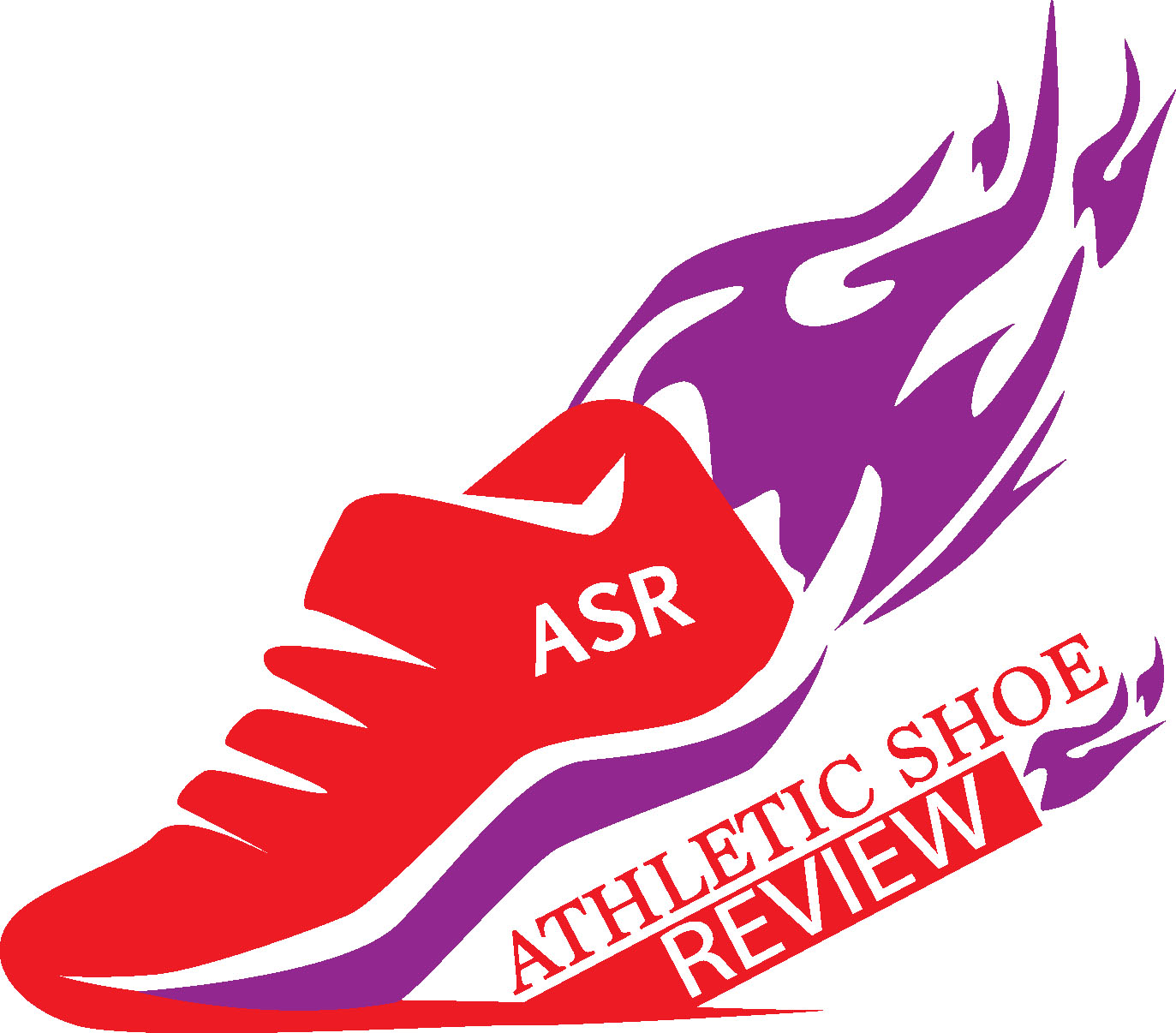

What is a Pedorthist and How Can He or She Help You Choose the Right Athletic Shoes?
You’ve probably heard of a podiatrist, and you may know that podiatrists specialize in diagnosing and treating foot and ankle problems. But what is a pedorthist?
Well, if you’ve ever been to a specialty shoe store or had to purchase orthotics for your shoes, then you probably encountered one. A pedorthist is a health professional who is trained in footwear fitting, designing orthotic devices, and constructing or modifying shoes to prevent or improve foot and ankle pain or disability.
Read on to learn more about what a pedorthist can do for you. And since this website focuses on women’s athletic shoes, I talked to a real live pedorthist to hear his recommendations for choosing the best athletic shoes.
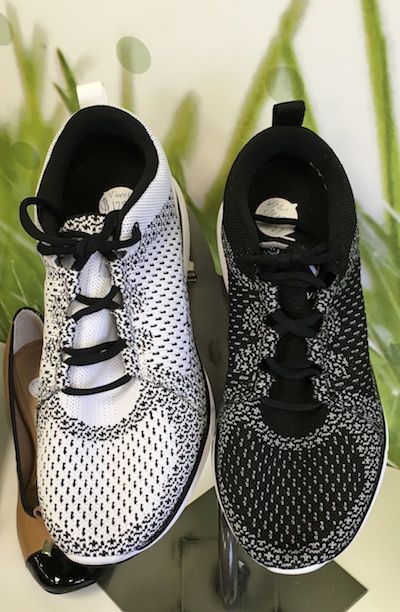
Pedorthist vs. Podiatrist
Pedorthics as a health profession came about in the late 1950s. The specialty can help people alleviate pain that may be caused by disease, injury, overuse, or even congenital deformities of the foot or ankle – without the use of drugs or surgery.
Podiatrists, or Doctors of Podiatric Medicine (DPM), can prescribe medication, provide medical treatment, and perform surgery. Pedorthists, on the other hand, do not attend regular medical school. But they do have to complete a pedorthic education course, have 1,000 hours of training, and then pass a national exam to become certified.
Since a pedorthist cannot medically treat you or diagnose foot problems, how can he or she help you? They are trained to recommend shoes or insoles to people who are experiencing aches or pains, so if you’re having such an issue when walking or running, they may be able to help.
You should probably see a podiatrist or orthopedist first if you’re having foot pain, but if you receive a diagnosis that can be treated by changing your shoes or adding insoles, then that’s where a pedorthist comes in. They can help you pick out new shoes or insoles that will improve your gait and foot efficiency, thereby reducing your pain.
So your best bet is likely to work together with both of them.
Meet a Pedorthist
A pedorthist can help you pick out custom shoes or insoles when you are experiencing pain, or make modifications to your shoes for everyday comfort. But what about athletic shoes? Does a pedorthist help you only when you experience a problem, or can you visit one to get the right fit for your athletic shoes?
I contacted Foot Solutions for answers to these questions. According to its website, “Foot Solutions is a leading international retailer specializing in personalized assessments, stylish high performance footwear, custom-fitted, custom-crafted arch supports and accessories designed to help individuals live pain free comfortably. With more than 150 stores in 14 countries, Foot Solutions is the world’s largest health and wellness franchise organization focused on foot health and other physical conditions that can impair mobility.”
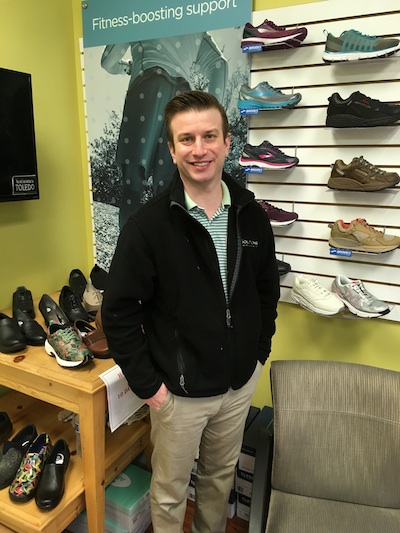 Zach is a pedorthist at Foot Solutions
Zach is a pedorthist at Foot SolutionsI visited a local Foot Solutions store and met with Zachary M. Ostrowski, a Certified Pedorthist. He views his role of pedorthist as basically a podiatrist’s assistant. “It’s a growing profession, but we need more people to be educated about it and what we do.”
Zach says that about 90% of
the people who come in to see him have plantar fasciitis, and
they’re looking for some pain relief.
The problem is so prevalent because, as he says, “We walk on hard
surfaces all the time, and something’s got to give. It’s either going to be your foot or the cement, and most
likely it’s going to be your foot.”
He also sees customers who have pain in the ball of their foot, arthritis, diabetic foot problems, or those that are just looking for a more comfortable pair of shoes.
A Pedorthist's Athletic Shoe Advice
Most shoe companies can’t make supportive shoes to fit every foot size and shape. Since it’s not yet possible to get shoes custom-made for every person, the only way to find the shoe that fits best is to try them all. But who has time for that? This is where pedorthists can be helpful, as they are trained to determine what will fit an individual foot best.
Even if you have healthy feet and are just looking for comfortable shoes, a pedorthist can point you in the right direction. He or she can assess your feet and help you find the best fitting shoes, which can help prevent any future foot problems.
Zach’s advice for choosing athletic shoes is to make sure they aren’t too tight, that they don’t pinch your toes, and that the heel doesn’t slip too much. A little slipping is okay, but your foot should not be coming out of your shoes when you walk or run. They need to be the right size for your foot and have proper support.
“The stiffer the shoe, the better,” Zach stresses. “They shouldn’t bend like a dirty dishrag.” If you have any type of foot, knee, hip, or back pain, the issue should be addressed when you choose your shoes.
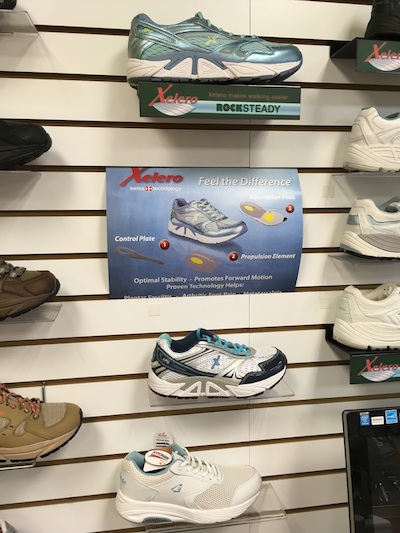 Xelero athletic shoes at Foot Solutions
Xelero athletic shoes at Foot Solutions“Supporting the bottom of your feet is probably the most important thing you can do with your shoes,” Zach says. Support helps reduce the workload on your feet, which can prevent plantar fasciitis and other issues.
Another thing to be careful of when choosing athletic shoes is motion control. As Zach explains, foot types range from high arches to flat feet, and most shoes and over-the-counter orthotics are designed for medium feet – right in the middle of the spectrum. If you have high arches, your feet may roll outward when you walk or run, and if you have flat feet, they may roll inward. There are shoes designed for motion control that prevent your foot from rolling.
However, motion control shoes might actually over-correct your issue and create new problems. Zach explains that it’s best to choose a shoe with a neutral heel and a thicker, cushioning sole. If you have a problem keeping your foot in a neutral position, it may be better to use custom-made orthotics since they fit your individual foot and won’t over-correct the problem.
Recommended Shoe Brands
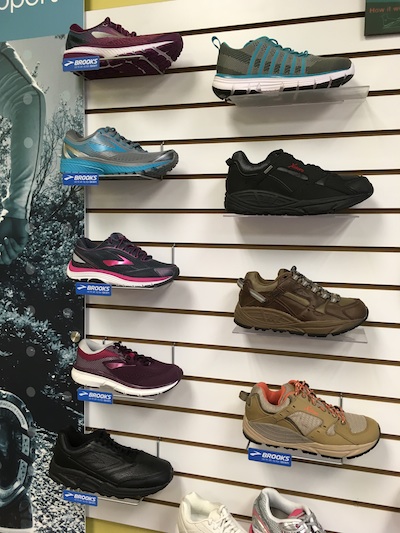 Brooks athletic shoes at Foot Solutions
Brooks athletic shoes at Foot SolutionsZach recommends the Xelero shoe for walking or running. The shoe features a forefoot rocker to help decrease the workload on your foot. Since all your weight comes down on the ball of your foot when you step, this design helps make the shoe do more of the work. The sole cups your foot rather than having your foot sit on top of it, and the shoe upper is stronger than many other brands.
For more serious running, Zach recommends Brooks. The brand has been around for a long time and specializes in running shoes more than any other type of shoe, so they concentrate their efforts on designing them to be best for running.
He is definitely not a fan of the minimalist shoe. Minimalist shoes are defined but the Journal of Foot and Ankle Research as “Footwear providing minimal interference with the natural movement of the foot due to its high flexibility, low heel to toe drop, weight and stack height, and the absence of motion control and stability devices.” Vibram FiveFingers and Nike Frees are examples of this type of shoe.
Zach feels that wearing minimalist shoes is too much like being barefoot. The shoes do not support your feet, which can lead to pain or injuries. “People say we were born to walk barefoot, so we don’t need shoes,” he says. “They tell me that people in the past didn’t wear shoes and everyone was fine. But I say, in the past we did not have concrete. We were not walking on all these hard surfaces. We need to evolve with the world around us, and that includes choosing supportive shoes.”
What Does This Mean For You?
Although Zach recommends these specific shoe brands, he stresses that there are other great shoe brands and designs out there. You have to determine which is the best for your individual needs. This can be a long and difficult process, but a pedorthist can certainly work with you and point you in the right direction.
